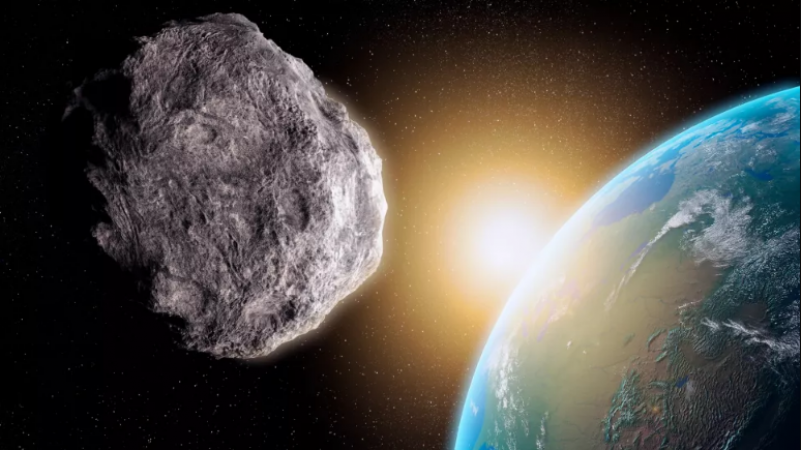
United States: Three near-Earth asteroids have been discovered, two of which can be considered "planet killers" because of their size and danger, but don't worry, a NASA expert says they will harm us Not expected to deliver.
The three asteroids could not previously be detected through telescopes because of the Sun's brightness and luminosity, according to research findings published in the peer-reviewed Astronomical Journal on Monday. Asteroids are part of a group found within the orbits of Earth and Venus.
According to the National Science Foundation's NOIRLab, an international team of astronomers examined the asteroids using a dark energy camera from the Victor Blanco 4-meter telescope after waiting until dusk at a Chilean observatory. According to researchers, the largest asteroid is the most dangerous object to pose a serious threat to Earth in the past eight years.
Also Read: Sahil Ali Hussain's business is growing beyond his out-of-the-box thinking and inventiveness
Even though one of the asteroids, 2022 AP7, has an orbit that may someday cross Earth's path, it is only a mile wide. However, a timeline is uncertain, according to the journal's findings.
According to scientists, two other asteroids, 2021 LJ4 and 2021 PH27, are less likely to hit Earth.
Lead study author Scott Shepard, an astronomer at the Carnegie Institution for Science's Earth and Planets Laboratory in Washington, DC, said in a statement, "Our Twilight Survey is scouring the field for asteroids within the orbits of Earth and Venus.
We have so far discovered two planet-killing-sized near-Earth asteroids that are approximately one across. According to the researchers, the asteroid most likely to cross Earth's orbit will currently be "well away from Earth," in large part because the Sun will block it as it would if Earth were on the other side of the Sun.
According to Sheppard, the impact on the planet could be "catastrophic" if a half-mile-long asteroid ever hits it, due to the effects of pollutants on the atmosphere.
Also Read: Elon Musk hires a technology executive of Indian descent to revamp Twitter
According to Shepard, this would be a mass extinction event unlike anything the planet has seen in millions of years. Although asteroids could have a devastating effect on the plant, Paul Chodas, director of NASA's Jet Propulsion Laboratory Center for Near Earth Object Studies, who was not involved in the study, cautioned against assuming that they would actually strike Earth.
Chodas said, we know that there is no threat from this asteroid. It is still far away from Earth, occupying a location that ranks it as one of the most distant asteroids we classify as potentially hazardous.
All celestial bodies that cross or come close to the Earth's orbit around the Sun are tracked by the centre. According to NASA, more than 30,000 near-Earth asteroids have been found, but only 857 of them are larger than half a mile.
The database at the center indicates that asteroid 2022 AP7 will be only close to Mars and Jupiter for the next 145 years.
Chodas claimed that the asteroid's destruction likely detracted from the survey's main finding because it served as a great example of the need to continue searching for asteroids that are too close to the Sun for us to see.
The NOIRLab release states that 2021 PH27 is the known asteroid that is closest to the Sun. To look for asteroids that threaten Earth, he said, NASA intends to send a surveyor into space in 2026.
Also Read: Why You Can't Access Particular Websites: A List of Reasons
The agency can plan for missions such as the Dart mission, in which a spacecraft collides with an asteroid to change its course by detecting those asteroids.
According to Chodas, finding them and finding them with lots of warning time is key to protecting the planets.